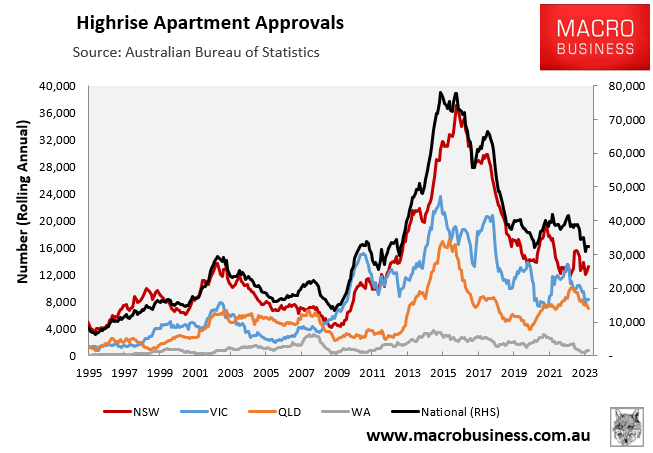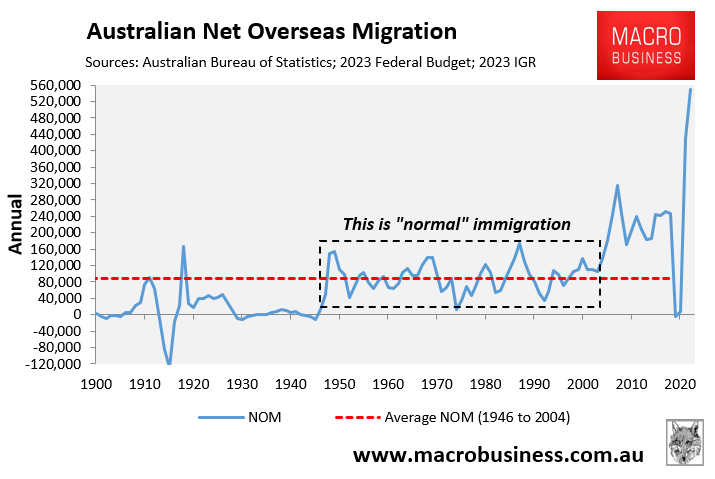YIMBYs, politicians, think tanks, the media, and developers are urging Australia to relax planning restrictions so that hundreds of thousands of apartments can be erected in the ”missing middle’ of our cities.
Their arguments ignore overwhelming empirical evidence that the last decade’s high-rise apartment boom was a disaster.

This surge in high-rise apartment construction coincided with increased building flaws and quality concerns, such as cracked foundations, water leaks, balcony defects, and flammable cladding.
Notable examples include Sydney’s Opal and Mascot Towers, which were evacuated due to extensive cracking.
These problems have cost owners and taxpayers millions of dollars to rectify.
Building regulation consultant Bronwyn Weir cautioned that an “enormous” problem had developed whereby “thousands and thousands of apartments have serious defects in their buildings”.
“Some of these buildings could potentially be a write-off. We have what is now you know, a systemic failure that is quite difficult to unravel”, she said.
Engineer Leith Dawes warned that purchasing an off-the-plan apartment in Australia had degraded into a game of “Russian roulette” because of the numerous building faults that are frequently overlooked.
According to a recent NSW government strata survey, more than half of newly registered buildings since 2016 had at least one significant issue that will cost an average of $331,829 to correct.
The Strata Community Association NSW found that waterproofing was the most common major issue, followed by fire safety.
It also discovered that around one out of every ten buildings had structural and enclosure difficulties, such as roof or facade flaws.
Similar structural problems have been uncovered across Melbourne, including leaking buildings, mould, and faulty balconies.
New research by the Australian Apartment Advocacy group has found that 50-60% of new apartments nationally have defects, which it says is contributing to the need for special levies across the country:
“Buyers across Australia say they have received huge bills for urgent maintenance work that were not clearly indicated before purchase”, The Guardian reported over the weekend.
“Industry experts say an increasing number of strata property owners – which can include apartments, townhouses and villas – [are] facing extra payments on top of regular levies to pay for maintenance”.
“What I am seeing more of are buildings that need to raise large sums of money at short notice”, Amanda Farmer, a strata lawyer in Sydney, told The Guardian.
She said that 90% of the disputes she deals with now involve failures to repair and maintain buildings.
“I’m seeing owners be completely blindsided by a very large bill that they have to contribute to, and they just had no expectation, no warning that this bill was coming”.
Samantha Reece, CEO of the Australian Apartment Advocacy group, says, “More and more buildings are now realising they have defects and are having to address them proactively.”
The Guardian cites a Melbourne home buyer named Lucy, who purchased a $300,000 apartment in Melbourne last year as her first home.
She has been stuck paying a $61,000 special levy she cannot afford. As a result, Lucy is now working a second job to pay the monthly payments of $2,800 for the special levy, $800 for the regular levy and $900 in mortgage repayments.
Let’s be serious for a moment. Many of these defective high-rise apartments would not have been built if the federal government had not chosen to grow Australia’s population so aggressively via extreme levels of immigration:

This tremendous volume of immigration demanded the construction of tens of thousands of new homes each year, resulting in speed above quality and degraded building standards.
As long as the federal government maintains an excessive immigration policy, builders will cut corners in the rush to build apartments quickly.
Build quality will deteriorate, construction standards will decline, and the country will be overwhelmed with thousands of defective high-rise structures.
Instead of pursuing a high-rise slum future, the federal government should limit immigration to a level proportional to the country’s ability to provide high-quality housing and infrastructure and the natural environment’s carrying capacity (especially water resources).
A return to pre-2005 immigration levels (see “normal” immigration in the chart above) will drive the construction industry to build quality over quantity. This will also relieve the country’s rental crisis.
The preceding decade’s boom in high-rise residential towers was a disaster, with buyers and taxpayers now bearing the brunt of the costs.
Why keep making the same mistakes by accelerating development rates to meet unsustainable population increases caused by immigration, which Australians neither want nor need?
Treat the problem at its source by cutting immigration to sensible and sustainable levels that can be easily absorbed.

